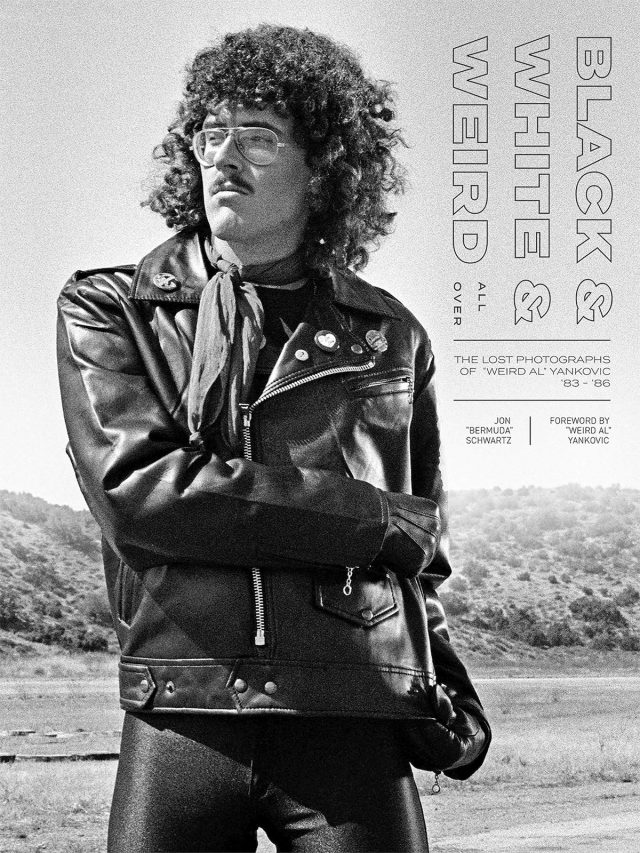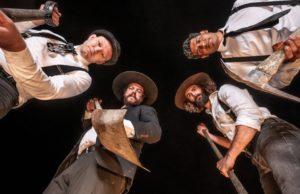If you’re the kind of person who would put Weird Al, Sun Ra, Thin Lizzy, The Clash, Darkthrone and Marillion on the same mixtape, you’re in for a treat. Read all about it:
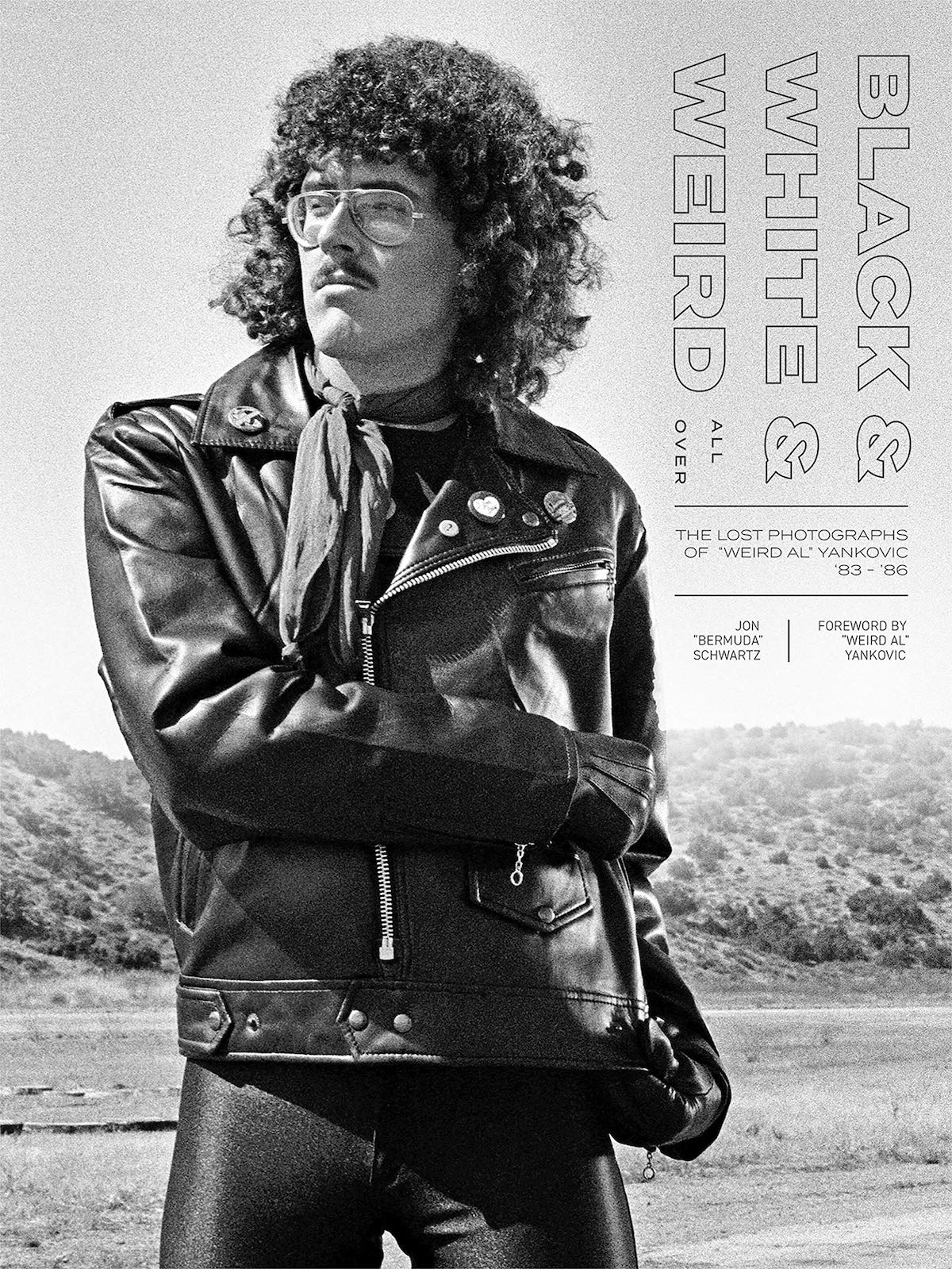 Black & White & Weird All Over: The Lost Photographs of “Weird Al” Yankovic ’83-’86
Black & White & Weird All Over: The Lost Photographs of “Weird Al” Yankovic ’83-’86
By Jon “Bermuda” Schwartz
THE EDITED PRESS RELEASE: “Weird Al” Yankovic is one of music’s most beloved figures. A skilled accordion player and songwriter, the California native is known for his meticulous parodies of popular songs, hilarious originals, and, of course, for upbeat polkas! For much of Al’s career, one man has been by his side, photographing and documenting the fun and weirdness: longtime drummer Jon “Bermuda” Schwartz. Since meeting Al in 1980, Jon has taken more than 20,000 images of Al in his element: on tour, in the studio, and on video sets. Black & White & Weird All Over presents hundreds of images of Al, culled from Jon’s personal collection of black-and-white photography. These photos only existed on contact sheets — out of mind and out of sight — until now! From behind-the-scenes shots taken on the sets of Al’s iconic videos for Ricky, I Love Rocky Road, Eat It and Living With A Hernia, to studio sessions for Al’s In 3-D and Polka Party! LPs, Black & White & Weird All Over is the ultimate photographic essay of Weird Al’s undisputed comedic genius.”
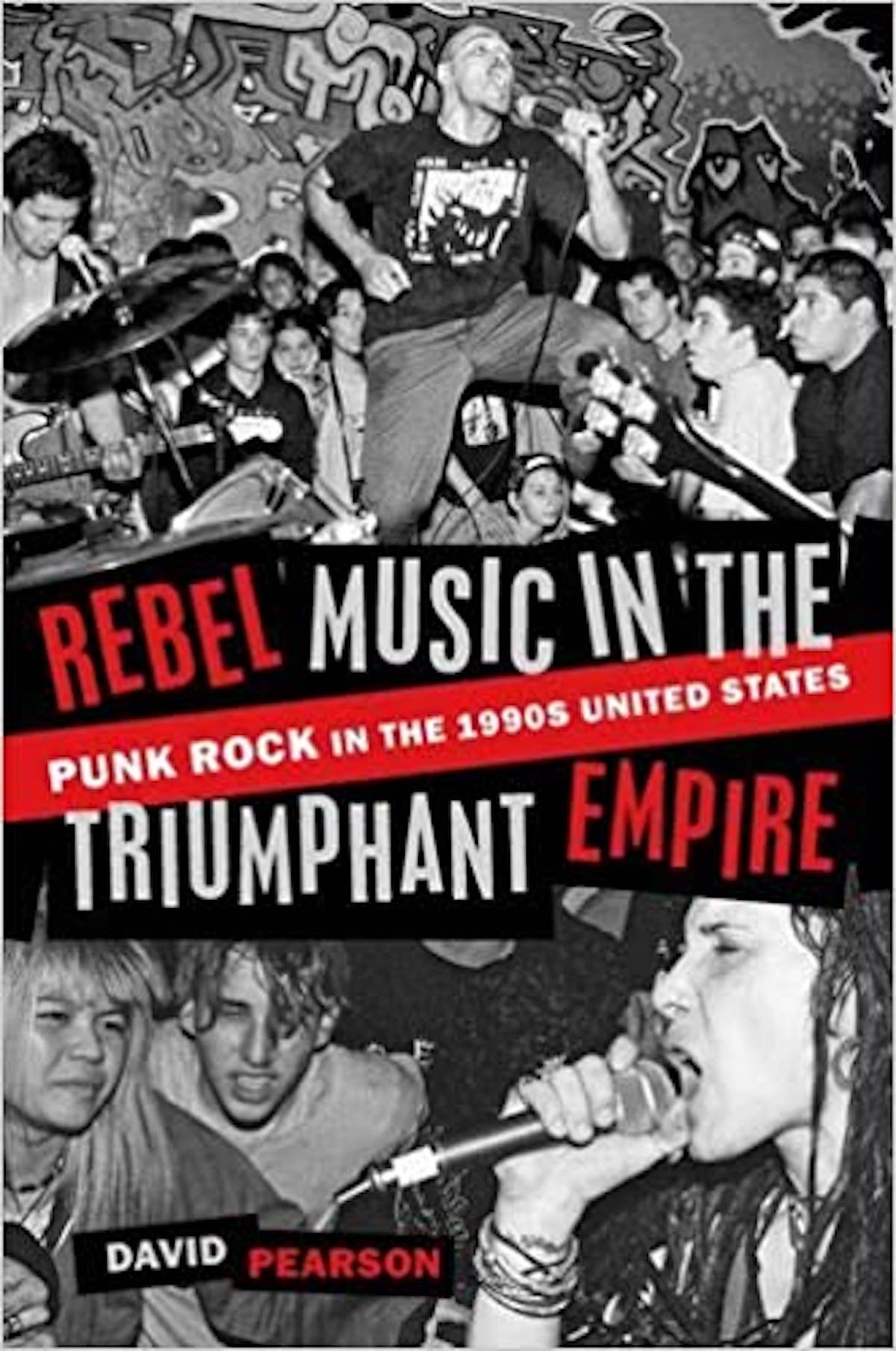 Rebel Music in the Triumphant Empire: Punk Rock in the 1990s United States
Rebel Music in the Triumphant Empire: Punk Rock in the 1990s United States
By David Pearson
THE EDITED PRESS RELEASE: “At the dawn of the 1990s, as the United States celebrated its victory in the Cold War and sole superpower status by waging war on Iraq and proclaiming democratic capitalism as the best possible society, the 1990s underground punk renaissance transformed the punk scene into a site of radical opposition to American empire. Nazi skinheads were ejected from the punk scene; apathetic attitudes were challenged; women, Latino, and LGBTQ participants asserted their identities and perspectives within punk; the scene debated the virtues of maintaining DIY purity versus venturing into the musical mainstream; and punks participated in protest movements from animal rights to stopping the execution of Mumia Abu-Jamal to shutting down the 1999 WTO meeting. Punk lyrics offered strident critiques of American empire, from its exploitation of the Third World to its warped social relations. Numerous subgenres of punk proliferated to deliver this critique, such as the blazing hardcore punk of bands like Los Crudos, propagandistic crust-punk/dis-core, grindcore and power violence with tempos over 800 beats per minute, and So-Cal punk with its combination of melody and hardcore. Musical analysis of each of these styles and the expressive efficacy of numerous bands reveals that punk is not merely simplistic three-chord rock music, but a genre that is constantly revolutionizing itself in which nuances of guitar riffs, vocal timbres, drum beats, and song structures are deeply meaningful to its audience, as corroborated by the robust discourse in punk zines.”
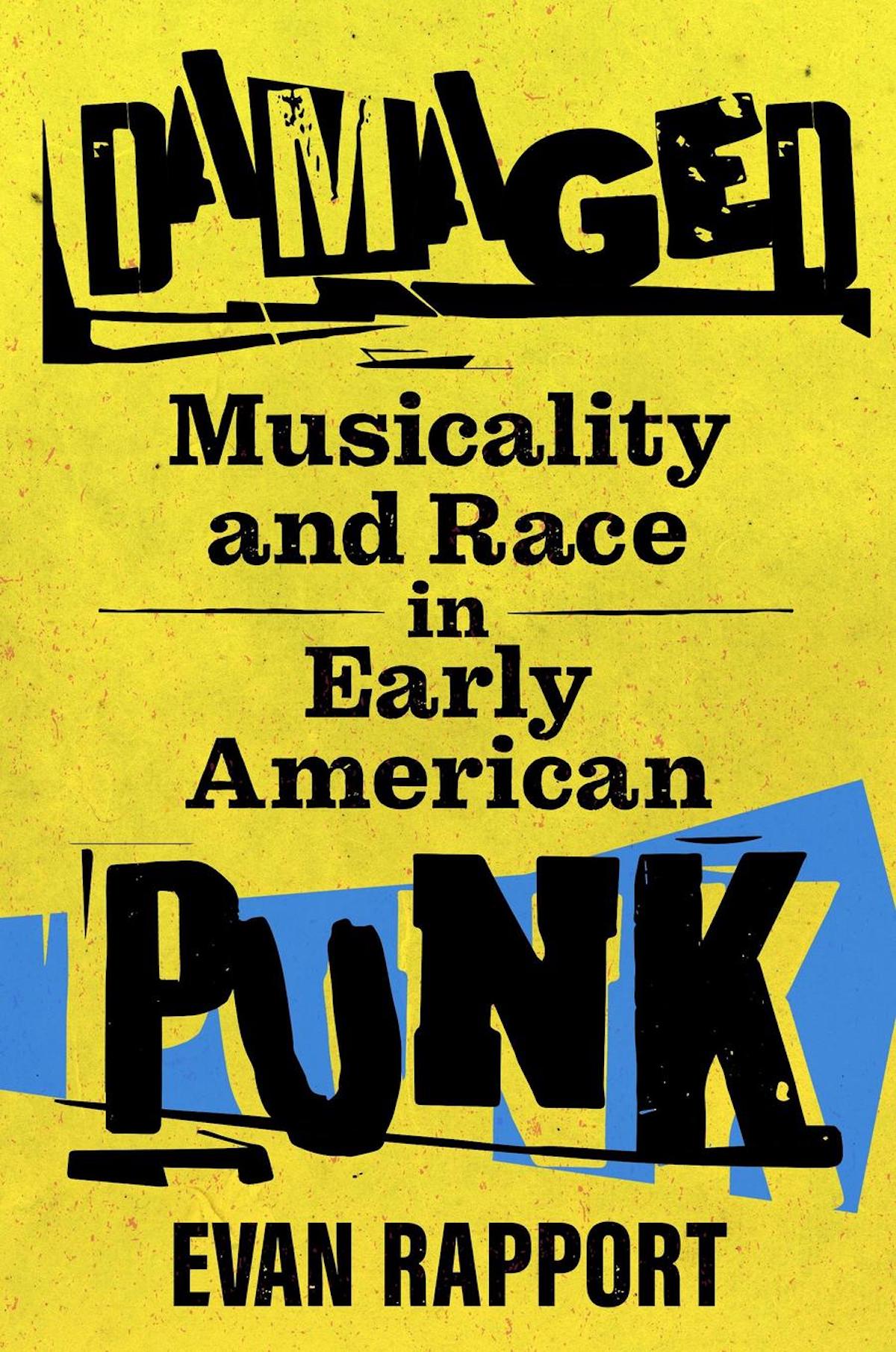 Damaged: Musicality and Race in Early American Punk
Damaged: Musicality and Race in Early American Punk
By Evan Rapport
THE EDITED PRESS RELEASE: “Damaged: Musicality and Race in Early American Punk is the first book-length portrait of punk as a musical style with an emphasis on how punk developed in relation to changing ideas of race in American society from the late 1960s to the early 1980s. Drawing on musical analysis, archival research, and new interviews, Damaged provides fresh interpretations of race and American society during this period and illuminates the contemporary importance of that era. Evan Rapport outlines the ways in which punk developed out of dramatic changes to America’s cities and suburbs in the postwar era, especially with respect to race. The musical styles that led to punk included transformations to blues resources, experimental visions of the American musical past, and bold reworkings of the rock-and-roll and rhythm-and-blues sounds of the late 1950s and early 1960s, revealing a historically oriented approach to rock that is strikingly different from the common myths and conceptions about punk. Following these approaches, punk itself reflected new versions of older exchanges between the U.S. and the U.K., the changing environments of American suburbs and cities, and a shift from the expressions of older baby boomers to that of younger musicians belonging to Generation X. Throughout the book, Rapport also explores the discourses and contradictory narratives of punk history, which are often in direct conflict with the world that is captured in historical documents and revealed through musical analysis.”
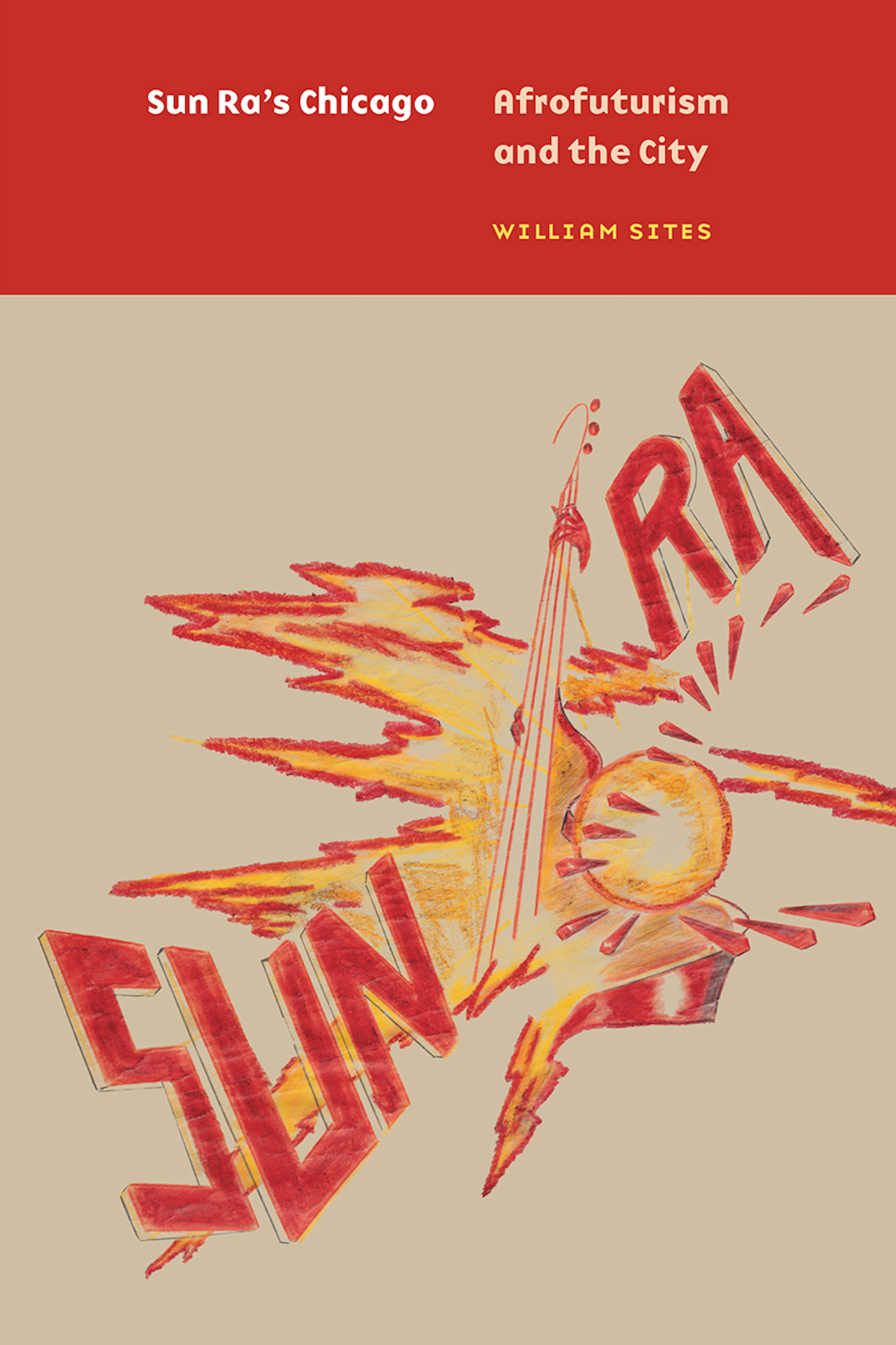 Sun Ra’s Chicago: Afrofuturism and the City
Sun Ra’s Chicago: Afrofuturism and the City
By William Sites
THE EDITED PRESS RELEASE: “Sun Ra (1914-93) was one of the most wildly prolific and unfailingly eccentric figures in the history of music. Renowned for extravagant performances in which his Arkestra appeared in neo-Egyptian garb, the keyboardist and bandleader also espoused an interstellar cosmology that claimed the planet Saturn as his true home. In Sun Ra’s Chicago, William Sites brings this visionary musician back to earth — specifically to the city’s South Side, where from 1946 to 1961 he lived and relaunched his career. The postwar South Side was a hotbed of unorthodox religious and cultural activism: Afrocentric philosophies flourished, storefront prophets sold ‘dream-book bibles’; and Elijah Muhammad was building the Nation of Islam. It was also an unruly musical crossroads where the man then known as Sonny Blount drew from an array of intellectual and musical sources&;from radical nationalism, revisionist Christianity, and science fiction to jazz, blues, Latin dance music, and pop exotica&;to construct a philosophy and performance style that imagined a new identity and future for African Americans. Sun Ra’s Chicago shows that late 20th-century Afrofuturism emerged from a deep, utopian engagement with the city — and that by excavating the postwar black experience of Sun Ra’s South Side milieu, we can come to see the possibilities of urban life in new ways.”
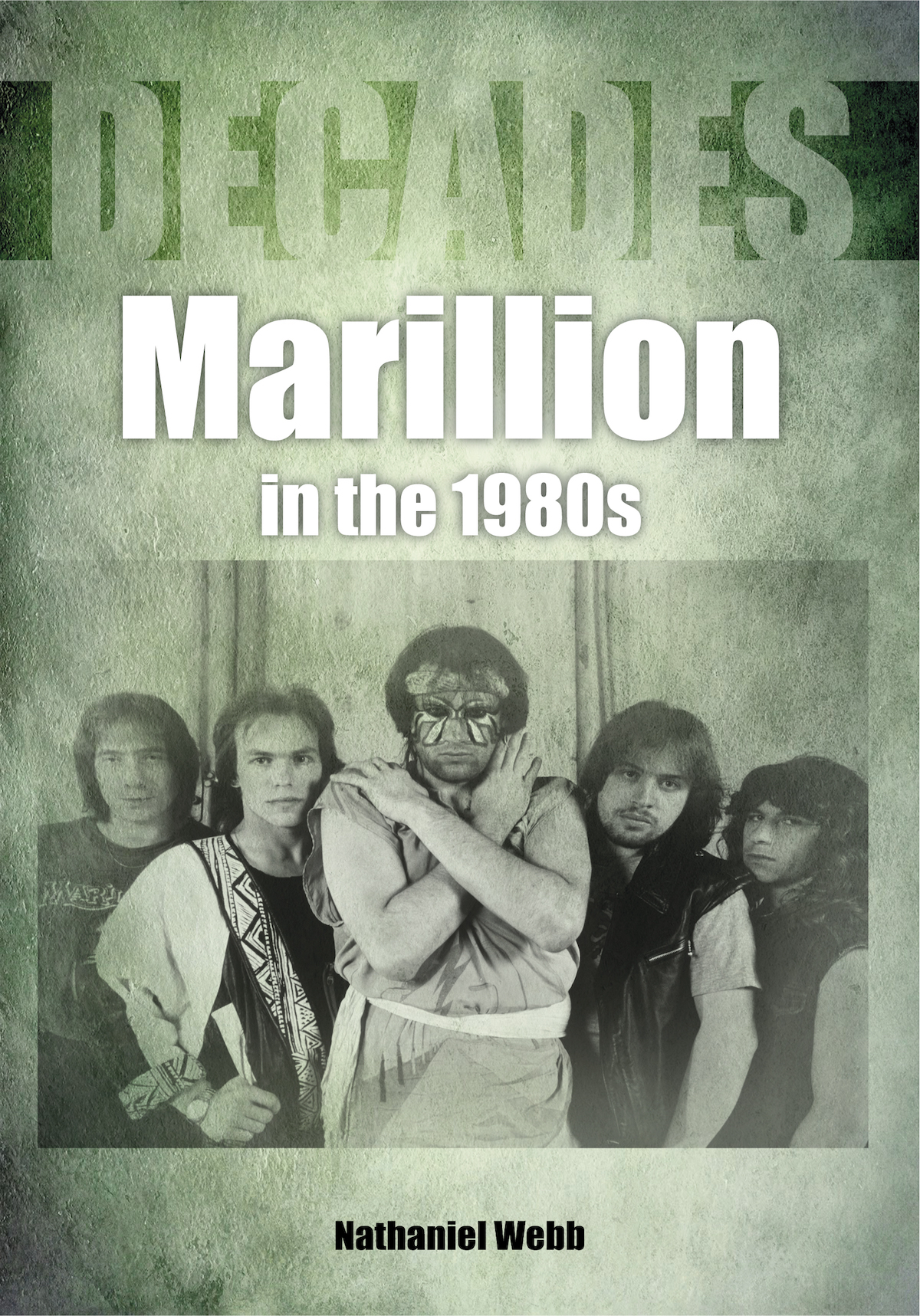 Marillion In The 1980s
Marillion In The 1980s
By Nathaniel Webb
THE EDITED PRESS RELEASE: “Derided as ’70s throwbacks upon their arrival and misremembered by the wider population as one-hit wonders, Marillion rode the 1980s as one of the most successful bands in Britain. Delivering the musical and conceptual density of early progressive rock with the caustic energy of punk, the Aylesbury heroes both spearheaded the neo-prog revival and produced its crown jewel in their number one album Misplaced Childhood and its Top 5 singles Kayleigh and Lavender. Musically, their influence reaches from prog legends Dream Theater and Steven Wilson to household names like Radiohead and Muse. The 1980s encapsulated Marillion’s birth, commercial apex, and near-implosion. This book combines meticulous history with careful musical analysis to chronicle their most turbulent decade from their first gig, through the dizzying success and destructive decadence of their time with frontman Fish, to his bitter departure and replacement by Steve Hogarth. It turns an experienced critical eye not only on their five albums of the decade — from the seminal Script For A Jester’s Tear to Season’s End (Hogarth’s debut) — and a lineup that remains as active as ever. The book also discusses demos, singles, and Fish’s solo debut to dissect a band which critics still love to hate, even as today’s music industry stands upon their shoulders as pioneers of self promotion and internet-based crowdfunding.
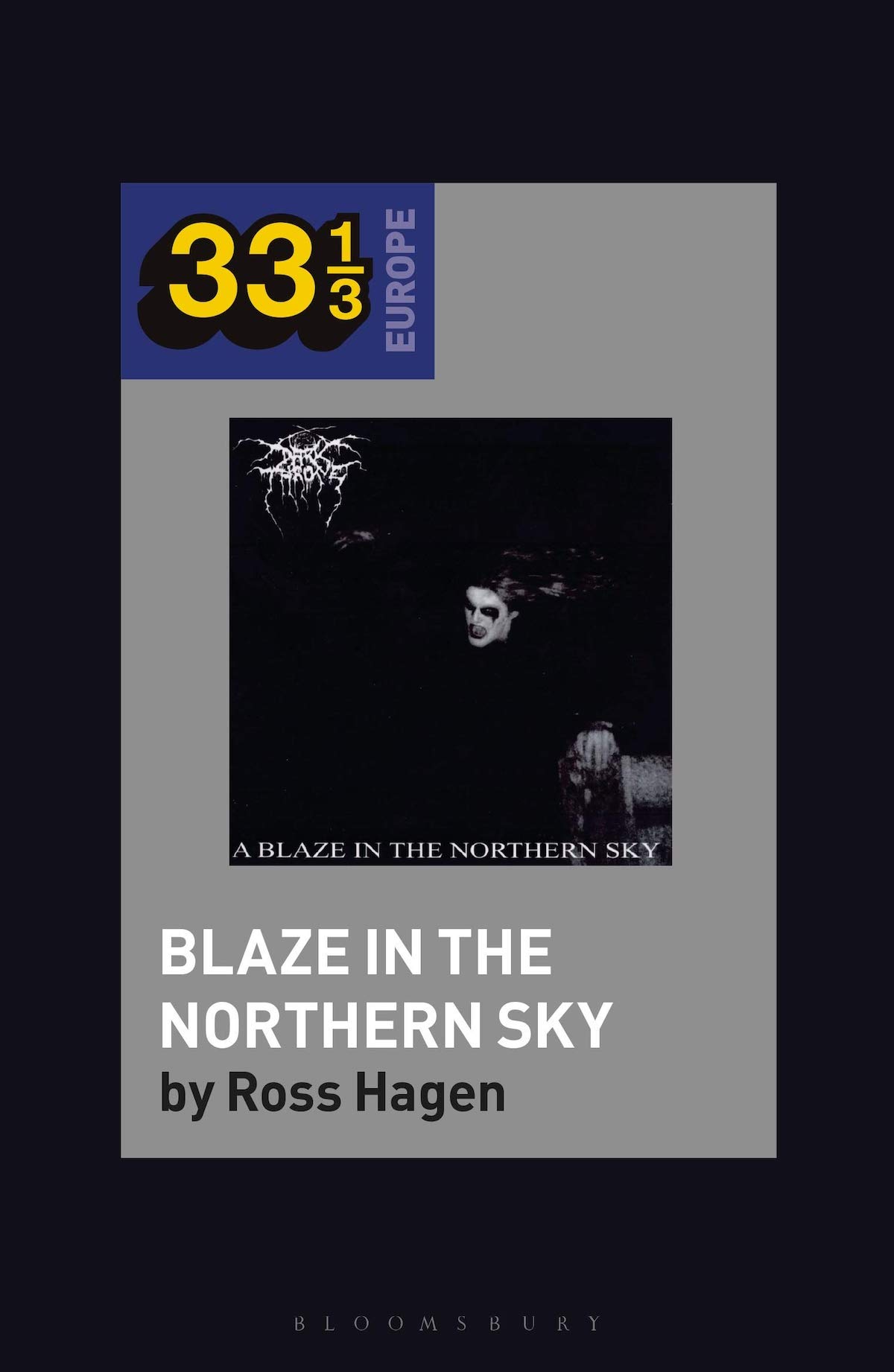 331/3 | Darkthrone’s A Blaze in the Northern Sky
331/3 | Darkthrone’s A Blaze in the Northern Sky
By Ross Hagen
THE EDITED PRESS RELEASE: “Darkthrone’s A Blaze in the Northern Sky (1992) is a foundational keystone of the musical and aesthetic vision of the notorious Norwegian black metal scene and one of the most beloved albums of the genre. Its mysterious artwork and raw sound continue to captivate and inspire black metal fans and musicians worldwide. This book explores the album in the context of exoticism and musical geography, examining how black metal music has come to conjure images of untamed Nordic wildernesses for fans worldwide. In doing so, it analyzes aspects of musical style and production that created the distinctly “grim” sound of Darkthrone and Norwegian black metal.”
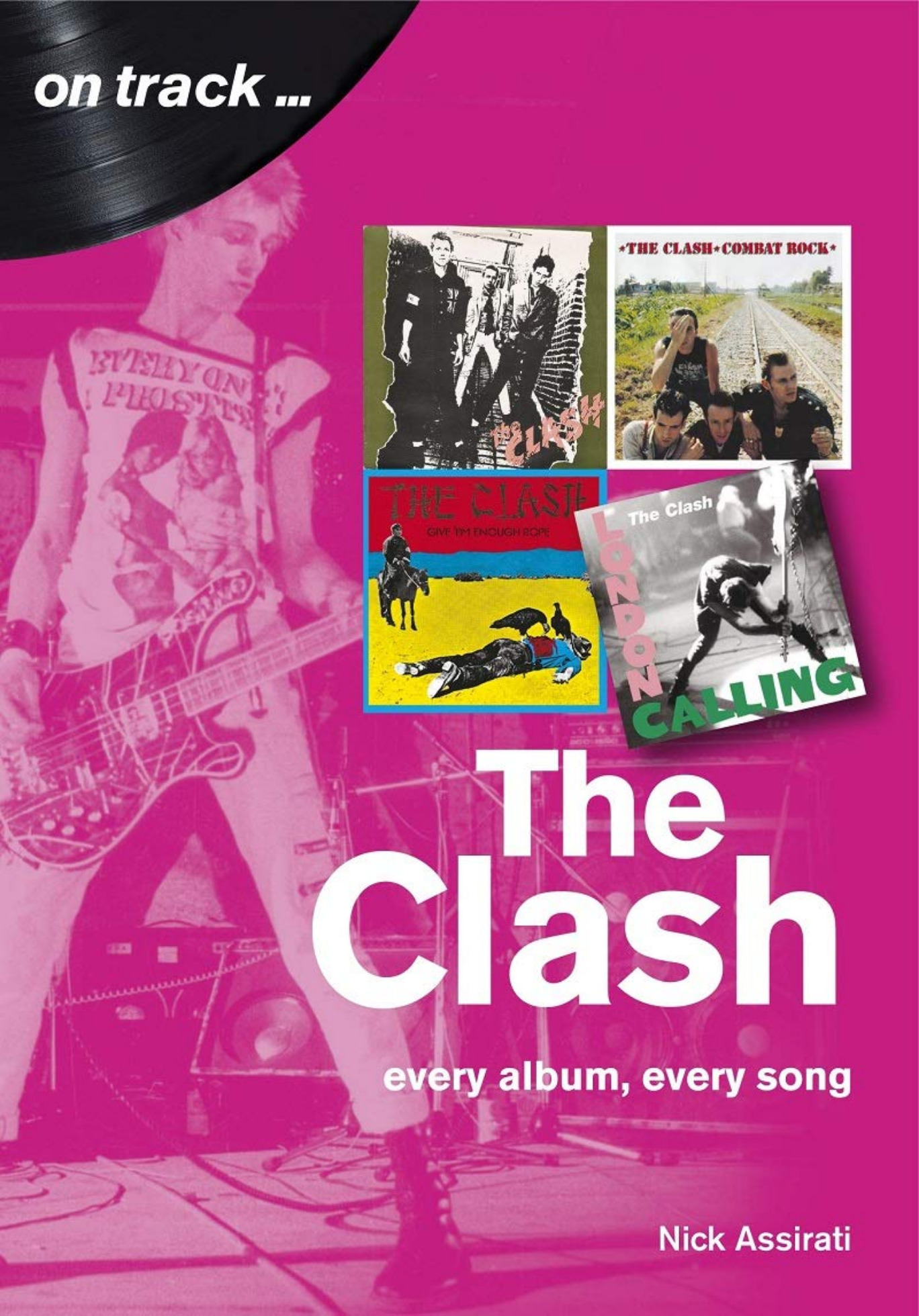 The Clash: Every Album, Every Song
The Clash: Every Album, Every Song
By Nick Assirati
THE EDITED PRESS RELEASE: “The Clash were an extraordinary band. Bursting out of the punk explosion in 1977, they recorded their self-titled first album over three weekends. It is now regarded as a quintessential punk record. Over the next five years they recorded another fourteen sides of long-playing vinyl including the platinum double-LP London Calling, which was voted the best album of the 1980s and the 8th best album of all time. Through the triple-LP Sandinista! to their double-platinum Combat Rock plus standalone singles and EPs, The Clash mixed both street and global politics with music spanning several genres including rock, reggae, jazz, rap, calypso and rockabilly. This book provides a concise narrative of the rise and fall of The Clash, putting each song of their prolific musical output into context, including a selection of bootlegs and rarities. There is also advice about how to buy The Clash’s music without falling into the record company trap of repeatedly buying the same material through different compilations, making this the most essential guide to the music of this iconic band yet written.”
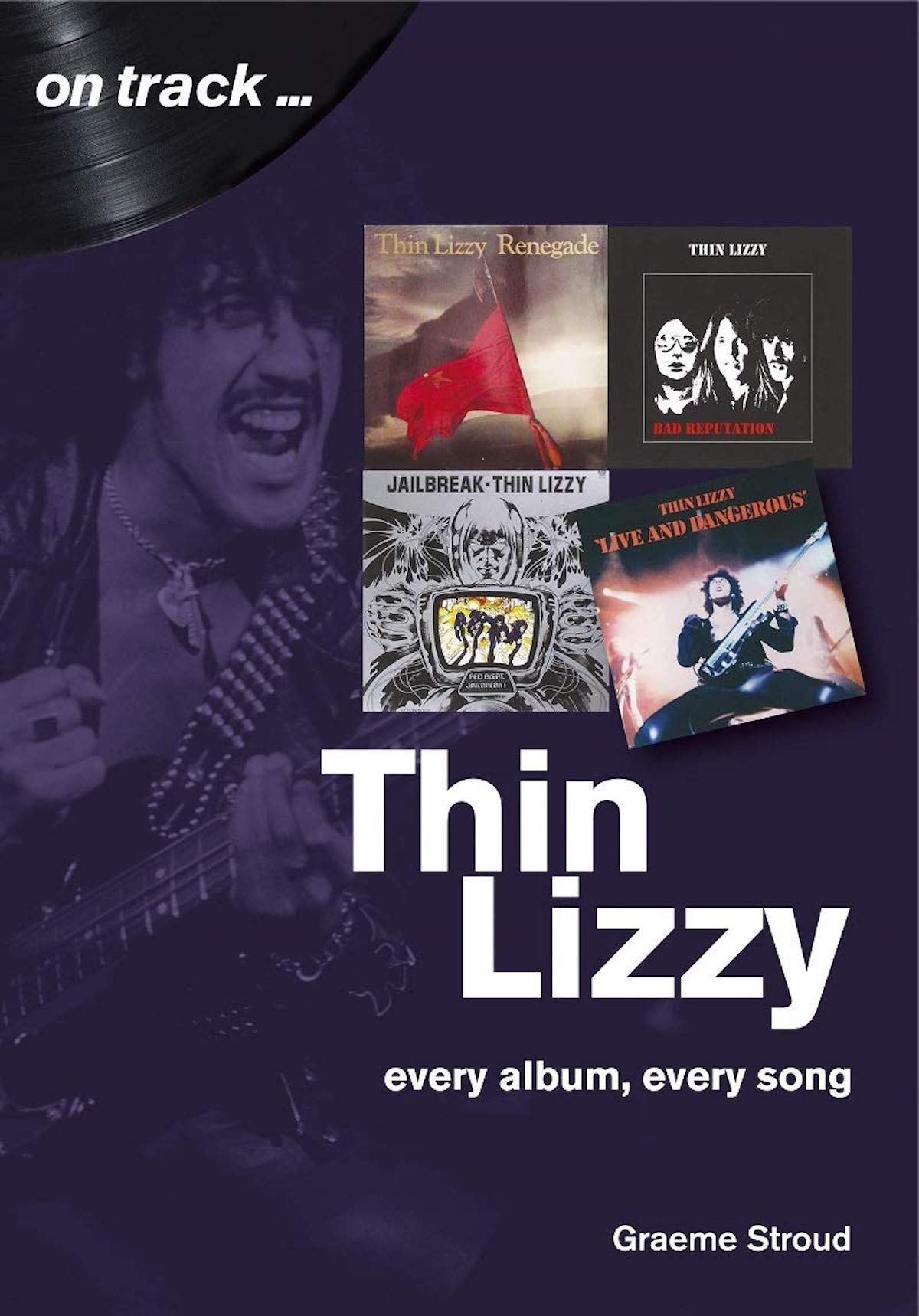 Thin Lizzy: Every Album, Every Song
Thin Lizzy: Every Album, Every Song
By Graeme Stroud
THE EDITED PRESS RELEASE: “Thin Lizzy emerged as a four-piece in Dublin as the 1960s drew to a close, when guitarist Eric Bell and keyboard player Eric Wrixon, both from Belfast, encountered a band named Orphanage, which included Dubliners Brian Downey on drums and charismatic frontman Philip Lynott. Evolving through a number of incarnations, through psychedelic power trio through classic four-piece guitar-toting rockers, to a quintet of heavy metal heroes, with the everpresent Lynott and Downey at its core, Thin Lizzy rose to become one of the most powerful and iconic rock bands in Europe, before the erosive effects of the rock ’n’ roll lifestyle took their toll. The purpose of this book is to present a history of the band through its music — to cover every song released through official channels, presented in context, including an overview of its content. From the difficult early years of the early 1970s, which did produce the surprise hit single Whisky In The Jar, via their breakthrough album Jailbreak and the heavy rock excesses of the early ’80s, this book follows the evolution of Thin Lizzy and its stellar cast of guitarists, from start to finish through their music, track by glorious track.”













